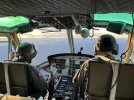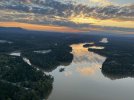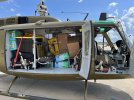But the hard truth is FEMA needs to be doing this at a national scale for disaster response. They’ve been in existence since Jimmy Carter, they’ve had 19 years to get it right since Katrina, and their Helene response has been subpar.
I think you need citations for such a bold statement rather than just anecdotes. Is everyone getting rescued at once? Of course not...just like everything else, disaster recovery is resource limited. But the Guard was on-scene as soon as it was safe to move in. FEMA uses A LOT of contractors, and tons were already in SC the morning of the storm. Additionally, FEMA pays for everything for the contractors, including their (OT) salary, so the contractors are VERY motivated to be there and support.
If "we" want more FEMA support, then the contracts need to be redone asking for more resources, which of course, takes more money. But if they do, I guarantee the contractors will be more than happy to bring more resources to bear.
So the question becomes- how would a civilian pilot simply offering aid (before getting in the way) be received? How can pilots be educated on the best way to effectively use their airplanes to deliver supplies and/or souls in a humanitarian crisis?
GA always seems to find a way. That's not to say it couldn't be more transparent. From what I've seen in FL, there's a central command center in TLH (this is where you always see Ron doing his briefings). Part of that command has an aviation coordinator (or several). These are the guys that move around resources, act as the go-between for the government and the contractor, and also coordinate the TFR entries when needed. And much more, I'm sure.
Officially, I think you'd reach out to the state to start the conversation. If there isn't a TFR, then sometimes showing up and/or working with a FBO might be an option. The trick is finding a place with gas, which is usually where everyone congregates (FEMA, power-line, HEMS, etc).




